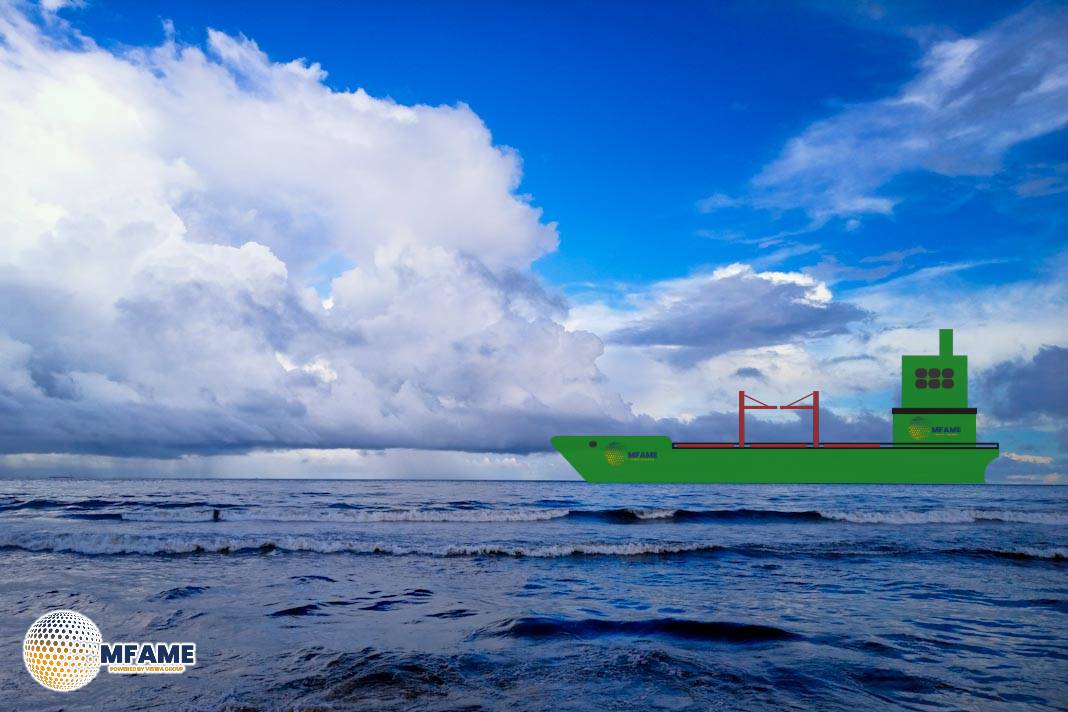 The UP World LNG Shipping Index (UPI) posted a moderate gain of 2.29%, signaling cautious optimism in the liquefied natural gas (LNG) shipping sector. Although the broader S&P 500 outpaced the UPI with a 4.59% jump, LNG shipping stocks saw positive movements fueled by redirected trade flows, especially in response to persistent US-China tariffs. Key players like Japan’s “K” Line and Golar LNG posted impressive gains, while New Fortress Energy was the lone significant decliner. Despite global market uncertainties, the sector continues to show resilience, supported by long-term demand and regional dynamics.
The UP World LNG Shipping Index (UPI) posted a moderate gain of 2.29%, signaling cautious optimism in the liquefied natural gas (LNG) shipping sector. Although the broader S&P 500 outpaced the UPI with a 4.59% jump, LNG shipping stocks saw positive movements fueled by redirected trade flows, especially in response to persistent US-China tariffs. Key players like Japan’s “K” Line and Golar LNG posted impressive gains, while New Fortress Energy was the lone significant decliner. Despite global market uncertainties, the sector continues to show resilience, supported by long-term demand and regional dynamics.
Trade Flows Shift as Tariffs Reshape LNG Supply Chains
The LNG shipping sector is undergoing significant shifts due to geopolitical tensions, particularly the ongoing US-China tariffs. These tariffs have altered global LNG trade routes:
-
US LNG exports are increasingly directed toward Europe, bypassing China.
-
China is sourcing LNG from non-US suppliers, leading to a reshuffling of shipping patterns.
-
In Asia, high spot LNG prices (above $11/mmBtu) have discouraged short-term purchases by China and India, while South Korea remains active in the spot market.
In Europe, gas demand is declining due to seasonal patterns, but storage concerns for summer persist. Analysts like Florence Schmit (Rabobank) stress the importance of monitoring storage injections, especially as the continent seeks to maintain energy security amidst uncertain geopolitical conditions.
UPI Constituents Show Mixed but Generally Positive Performance
Despite low trading volumes, most UPI-listed companies ended the week on a high note, with single-digit gains being the norm:
-
Top performers:
-
K Line (TSE: 9107): +7% – Strongest weekly gainer; recovering from previous shocks
-
Golar LNG (NYSE: GLNG): +5.2% – Re-established uptrend
-
Capital Clean Energy Carriers (NYSE: CCEC): +5.2% – Approaching technical resistance
-
NYK Line and Mitsui O.S.K. Lines (Japan): +5.1% and +4.1% respectively
-
Tsakos Energy Navigation (NYSE: TEN): +4% – Now trading above support levels
-
BP and Awilco LNG: Approx. +3%
-
Sole Decliner:
Overall, the index reflected a quiet but upward momentum, suggesting investor interest in LNG shipping remains intact despite macroeconomic headwinds.
Long-Term Positivity Tempered by Near-Term Volatility
Looking ahead, the LNG shipping sector faces short-term uncertainty but maintains a positive long-term trajectory:
-
Short-Term:
-
Increased volatility expected due to geopolitical developments, including shifts in US foreign policy and global trade dynamics
-
Watch for breakouts at key resistance levels in major shipping stocks, which could trigger upward momentum
-
Long-Term:
-
Stable global LNG demand, bolstered by the energy transition and growth in emerging markets
-
Potential for new long-term shipping contracts
-
Investors advised to monitor corporate earnings, policy changes, and market competition
The UP World LNG Shipping Index, established in 2020, continues to provide crucial insights into the health of the LNG shipping industry, covering 19 companies that together represent over 65% of the world’s LNG fleet.
Did you subscribe to our daily Newsletter?
It’s Free Click here to Subscribe!
Source: LNG shipping stocks
 The UP World LNG Shipping Index (UPI) posted a moderate gain of 2.29%, signaling cautious optimism in the liquefied natural gas (LNG) shipping sector. Although the broader S&P 500 outpaced the UPI with a 4.59% jump, LNG shipping stocks saw positive movements fueled by redirected trade flows, especially in response to persistent US-China tariffs. Key players like Japan’s “K” Line and Golar LNG posted impressive gains, while New Fortress Energy was the lone significant decliner. Despite global market uncertainties, the sector continues to show resilience, supported by long-term demand and regional dynamics.
The UP World LNG Shipping Index (UPI) posted a moderate gain of 2.29%, signaling cautious optimism in the liquefied natural gas (LNG) shipping sector. Although the broader S&P 500 outpaced the UPI with a 4.59% jump, LNG shipping stocks saw positive movements fueled by redirected trade flows, especially in response to persistent US-China tariffs. Key players like Japan’s “K” Line and Golar LNG posted impressive gains, while New Fortress Energy was the lone significant decliner. Despite global market uncertainties, the sector continues to show resilience, supported by long-term demand and regional dynamics.













